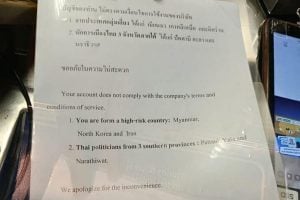Top web writing practices for great content

In today’s digital age, your ability to craft compelling web content can make or break your online presence. It’s not just about stringing words together; it’s about making an impact. Whether you’re aiming to inform, persuade, or entertain, understanding the nuances of web writing is key to grabbing attention in a sea of information.
You know that writing for the web is a different beast. With readers skimming through pages at lightning speed, your content needs to hook them in from the get-go. That’s why adopting best practices for web writing isn’t just recommended, it’s essential for standing out. Let’s dive into how you can write content that resonates and achieves your goals.
How to Write User-Friendly Content

Crafting content for the web might seem intimidating, but with the right approach, you can engage your readers consistently. You’re not just writing; you’re giving visitors a reason to stick around. Always aim for clarity, brevity, and relevancy. Users skim content looking for actionable information, so make every word serve a purpose. Every sentence should drive the reader to continue down the page.
Top rules for writing for the web
The digital realm runs on a set of unwritten rules, and understanding these can make or break your content’s success.
- Focus on engagement and readability.
- Apply SEO best practices to appear on that all-important first page of search results.
- Utilizing tools like readability checkers ensures your writing is accessible.
Be direct
Get straight to the point. Online readers have limited time and patience. They appreciate writing that delivers value without the fluff. When crafting your sentences, think of the most direct path to your message. Front-load your content, placing the most important information first.
Keep language simple
Simplicity is golden in web writing. The widespread adoption of English across the globe mandates that web content cater to a wide audience. Your choice of simple, understandable words ensures maximum comprehension and retention.
Use headings
Headings are not just formatting tools; they’re lifelines for readers navigating your content. A well-crafted heading tells your readers exactly what to expect in the following section, which is crucial when they’re scanning through your work. Make each heading informative and reflective of the corresponding content.
Meta descriptions
Meta descriptions are the snippets of text that appear under website titles in search results. They serve as a preview and can entice users to click through to your website. Make sure your meta descriptions accurately summarize the page content and include target keywords that improve SEO.
Optimize for SEO
Effective SEO practices help your content reach a broader audience. It’s essential to include relevant keywords, alt text for images, and internal links to boost your presence in search engines. Remember to keep keywords natural within the text—Google’s algorithms favor content that reads fluidly over keyword-stuffed articles.
By integrating these practices into your web writing, you’ll enhance user experience and increase the likelihood of your content achieving its goals. Focus on crafting pieces that guide your reader effortlessly through the information, reward their time, and provide tangible value—without the need for them to dig deep.
Write for your audience

Mastering the art of web writing isn’t just about following guidelines—it’s about connecting with your audience. Remember to keep your language simple and your message clear to ensure your content resonates with readers. Use headings to guide them and don’t forget to polish your meta descriptions to draw them in. By prioritizing these elements, you’ll not only improve user experience but also give your SEO efforts a significant boost. Stick to these best practices and you’re sure to craft content that not only ranks well but also truly engages.
Also, If you would like to know about the strategies to make good content here are 7 Steps to a Winning Content Strategy Plan
Latest Thailand News
Follow The Thaiger on Google News:


























